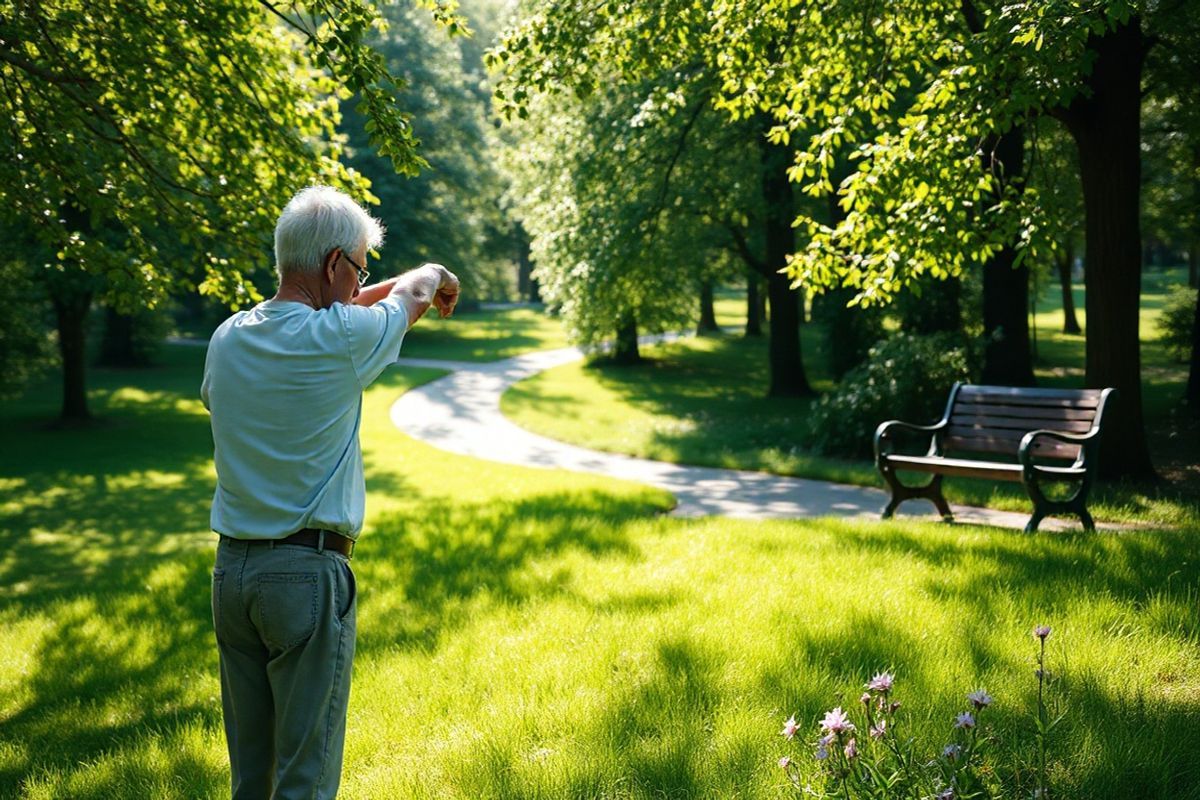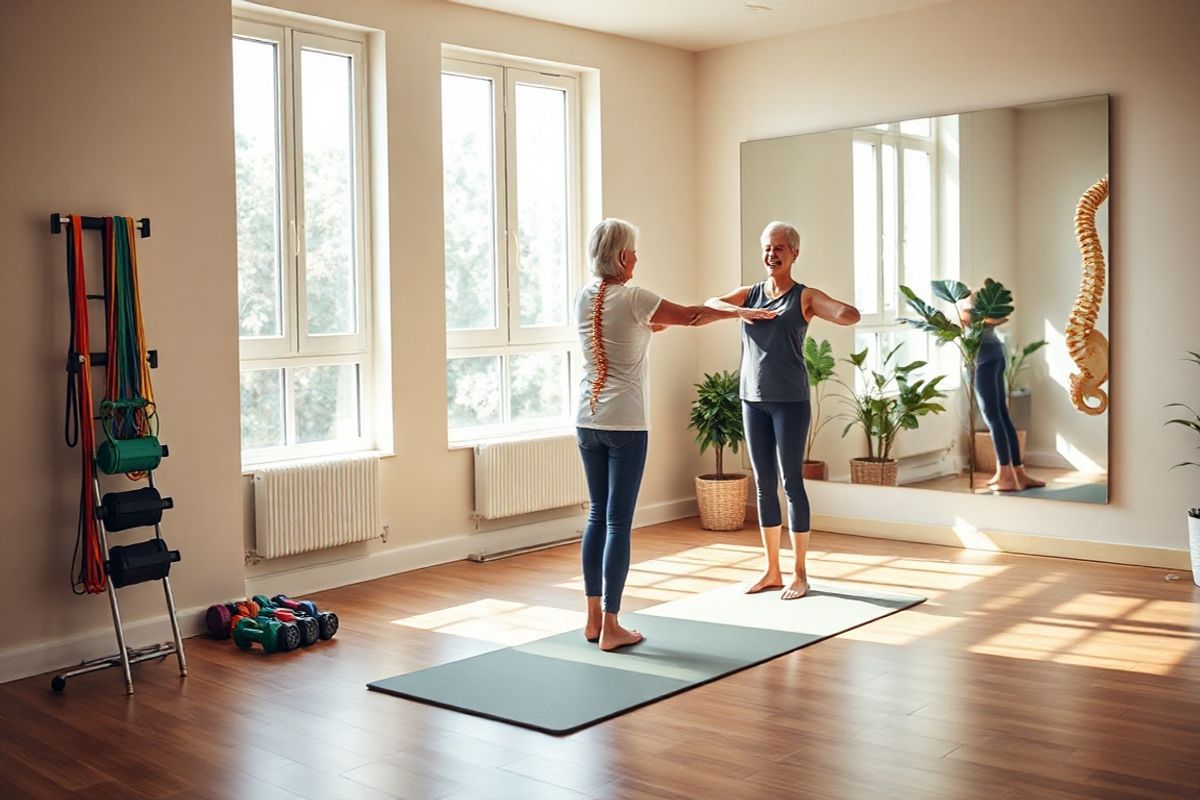Table of Contents
What is Lumbar Degenerative Kyphosis? An Overview of the Condition

Lumbar degenerative kyphosis (LDK) is a spinal condition that primarily affects older adults, particularly those who have a history of stooped or physically demanding work. This condition is characterized by an abnormal forward curvature of the lower back, resulting from degenerative changes in the spine’s bones and muscles. As individuals age, the intervertebral discs and cartilage that provide support and cushioning to the spine begin to deteriorate. This process of wear and tear affects the discs and joints in the lower back, leading to pain and structural deformity (Healthline, 2023).
Several factors contribute to the development of LDK, including repetitive bending and stooping, heavy lifting, and prolonged imbalanced posture. Such occupational factors place excessive stress on the lumbar spine, accelerating degenerative changes. The progression of LDK is often accompanied by symptoms such as chronic lower back pain, a noticeable hunched posture, decreased mobility, muscle weakness, fatigue, and nerve pain, which may manifest as pain or numbness in the legs (Healthline, 2023).
Recognizing the Symptoms of Lumbar Degenerative Kyphosis
Recognizing the symptoms of lumbar degenerative kyphosis is crucial for timely diagnosis and intervention. Common symptoms include:
- Chronic Back Pain: Persistent pain in the lower back that may worsen with certain activities.
- Postural Changes: A noticeable forward bending or hunched posture, often leading to a stooped appearance.
- Decreased Mobility: Difficulty in standing up straight or walking, which can impact daily activities.
- Muscle Weakness: Weakness and atrophy in the back muscles, contributing to overall instability.
- Fatigue: Increased tiredness due to the extra effort required to maintain an upright position.
- Nerve Pain: Pain or numbness in the legs caused by pinched nerves in the lower back (Healthline, 2023).
Understanding these symptoms helps individuals seek appropriate medical attention and initiate treatment options before the condition worsens.
Effective Treatment Approaches for Lumbar Degenerative Kyphosis

The first-line treatment for lumbar degenerative kyphosis typically involves conservative approaches aimed at managing symptoms and improving quality of life. Effective treatment modalities may include:
-
Exercise: Tailored strengthening and stretching exercises can enhance muscle support and flexibility. Engaging in physical therapy is vital for guiding patients through appropriate exercises to alleviate pain and improve mobility.
-
Physical Therapy: Professional guidance on exercises, posture correction, and pain management techniques can significantly improve functionality and reduce discomfort.
-
Pain Management: Medications such as nonsteroidal anti-inflammatory drugs (NSAIDs) are commonly used to reduce pain and inflammation associated with LDK.
-
Bracing: The use of a back brace can provide additional support and improve posture, especially during daily activities.
In cases where conservative management fails to alleviate severe symptoms, surgical interventions may be considered. Common surgical options for LDK include:
-
Spinal Fusion: This procedure involves joining two or more vertebrae to stabilize the spine and correct deformity, effectively minimizing painful movement.
-
Osteotomy: This surgery involves cutting and realigning bones to restore proper spinal alignment and reduce kyphosis.
-
laminectomy: A decompression surgery that removes a portion of the vertebra called the lamina to relieve pressure on the spinal cord or nerves (Adult Kyphosis, n.d.).
Preventing Lumbar Degenerative Kyphosis: Tips for Optimal Spinal Health
Preventive measures play a vital role in maintaining spinal health and potentially mitigating the onset of lumbar degenerative kyphosis. Here are some practical tips:
-
Regular Exercise: Engage in a consistent exercise regimen that includes flexibility, strength training, and aerobic activities to keep your back muscles strong and supportive.
-
Maintain a Healthy Weight: Excess weight can place undue stress on the spine, exacerbating degenerative changes. Adopting a balanced diet and maintaining a healthy weight can help alleviate strain on the lumbar region.
-
Practice Good Posture: Awareness of posture during daily activities, especially when sitting or lifting, can significantly reduce the risk of spinal misalignment and degeneration.
-
Avoid Heavy Lifting: Utilize proper body mechanics when lifting heavy objects. Bend at the knees and keep the load close to your body to minimize stress on the spine.
-
Use Supportive Footwear: Opt for shoes that provide adequate support to maintain proper spinal alignment and reduce the risk of strain.
-
Hydration and Nutrition: Staying hydrated and consuming a diet rich in anti-inflammatory foods can support overall spinal health and reduce discomfort (Spine: Anatomy, Function, Parts, Segments & Disorders, n.d.).
The Importance of Spinal Health: How to Maintain a Healthy Spine
A healthy spine is foundational to overall well-being and functionality. The spine’s design allows it to support the body’s weight, enable movement, and protect the spinal cord, which is essential for communication between the brain and the body. As such, maintaining spinal health is crucial to avoiding discomfort and disability.
Key Functions of the Spine
- Stability and Support: The spine provides essential support to the body, distributing weight and maintaining balance.
- Movement: A healthy spine allows for a full range of motion, enabling everyday activities.
- Shock Absorption: The spine’s natural curves and intervertebral discs act as buffers against impacts and stress.
- Neurological Integrity: Protects the spinal cord and nerve roots, facilitating communication between the brain and body (10 Tips for a Healthier Spine, n.d.).
Side Effects of Poor Spine Health
Poor spinal health can lead to various conditions, including:
- Acute and chronic back pain.
- Muscle spasms.
- Nerve injuries, such as sciatica and pinched nerves.
- Increased risk of spinal fractures and degenerative diseases (Spine: Anatomy, Function, Parts, Segments & Disorders, n.d.).
FAQ
What is lumbar degenerative kyphosis?
Lumbar degenerative kyphosis is a condition characterized by an abnormal forward curvature of the lower back due to degenerative changes in the spine, commonly seen in older adults.
What are the symptoms of lumbar degenerative kyphosis?
Symptoms include chronic back pain, postural changes, decreased mobility, muscle weakness, fatigue, and nerve pain.
How is lumbar degenerative kyphosis treated?
Treatment options range from conservative approaches like exercise and physical therapy to surgical interventions such as spinal fusion, osteotomy, and laminectomy in severe cases.
How can I prevent lumbar degenerative kyphosis?
Maintaining a healthy weight, practicing good posture, engaging in regular exercise, avoiding heavy lifting, and using supportive footwear can help prevent the onset of LDK.
Why is spinal health important?
A healthy spine is crucial for overall health as it supports the body, enables movement, absorbs shocks, and protects the spinal cord, which is essential for neurological function.
References
- Healthline. (2023). Lumbar Degenerative Kyphosis: Symptoms, Treatment, and More. https://www.healthline.com/health/lumbar-degenerative-kyphosis
- Adult Kyphosis. (n.d.). Retrieved from https://www.umms.org/ummc/health-services/orthopedics/services/spine/patient-guides/adult-kyphosis
- 10 Tips for a Healthier Spine. (n.d.). Retrieved from https://www.medstarhealth.org/blog/tips-for-healthy-spine
- Spine: Anatomy, Function, Parts, Segments & Disorders. (n.d.). Retrieved from https://my.clevelandclinic.org/health/body/10040-spine-structure-and-function
- 5 Ways to Keep Your Spine Healthy and Happy. (n.d.). Retrieved from https://www.spine-health.com/blog/five-ways-keep-your-spine-healthy-and-happy










